Central provinces may experience heavy rain due to storm circulation
On the afternoon of June 11, Deputy Minister of Agriculture and Environment Nguyen Hoang Hiep chaired a meeting on response to storm No. 1.
At the meeting, Mr. Pham Duc Luan, Director of the Department of Dyke Management and Natural Disaster Prevention, said that since last night (June 10), some localities in the Central region and the Northern Central Highlands have had moderate rain, some places have had heavy rain to very heavy rain. The rainfall from 7:00 p.m. on June 10 to 1:00 p.m. on June 11 was generally from 50-120mm; some stations with heavy rain such as: Quan Tuong Dai (Hue) 186mm, Hue City (Hue) 182mm, An Tay (Hue) 179mm, Nhon Hoa ( Gia Lai ) 204mm, Plei Tho Ga Lake (Gia Lai) 147mm.... The water levels of rivers in the Central region and the Central Highlands are all at low levels.
According to the report of the Border Guard Command, 53,792 vehicles/223,054 people have been counted and instructed on the developments and direction of the storm. Vehicles in the affected area have received warning information and are moving to avoid it.
According to the report of the Department of Fisheries and Fisheries Control, the total aquaculture area in coastal provinces from Quang Ninh to Khanh Hoa is 192,548 hectares; 272,367 cages; 3,848 aquaculture watchtowers are at risk of being affected by storms and floods.
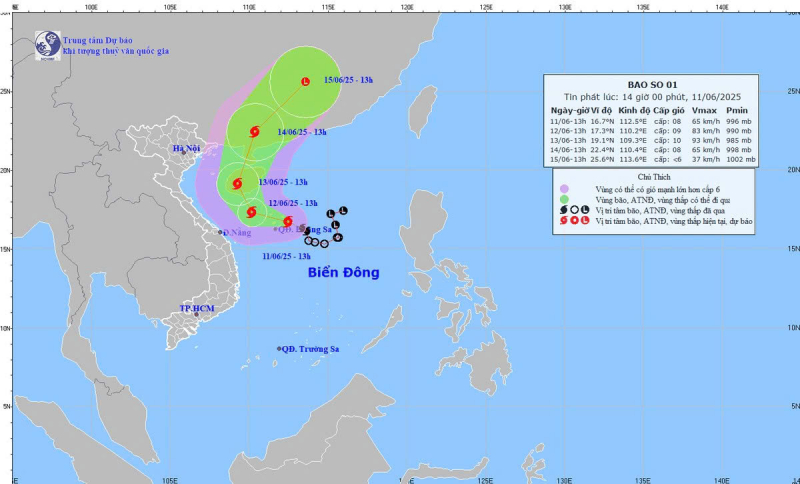
Regarding the situation of hydroelectric reservoirs, the South Central Coast has Vinh Son Reservoir and the Central Highlands has Dray Hlinh Reservoir operating to regulate through spillways. Irrigation reservoirs in the North Central region are currently at 50-85% of their design capacity; the South Central region is at 38-82% of their design capacity; the Central Highlands region is at 27-75% of their design capacity. The sea dyke and river dyke systems in coastal provinces from Quang Ninh to Ha Tinh still have 20 key weak dyke points and 7 projects under construction.
Commenting on the storm's developments, Mr. Mai Van Khiem, Director of the National Center for Hydro-Meteorological Forecasting, said that on the afternoon of June 11, storm No. 1 was in the east of Hoang Sa archipelago. The strongest wind near the storm's center was at level 8 (62-74km/h), gusting to level 10. The storm is moving in a West-Northwest direction at a speed of about 10km/h, faster than yesterday.
Forecast in the next 24 hours, moving northwest, then turning north towards Hainan Island (China). With the current scenario of the storm's movement, the central provinces may have a heavy rain due to the storm's circulation affecting the terrain of this area.
Specifically, today and tonight, June 11, the South Central region will have moderate rain, heavy rain, and locally very heavy rain with common rainfall of 30-80mm, some places over 150mm. From the night of June 11 to the morning of June 13, the Central Central region (Quang Binh to Quang Ngai) will have from 100-300mm, some places over 450mm. The Northern Central Highlands region will have from 70-150mm, some places over 200mm. Warning of the risk of localized heavy rain over 200mm within 6 hours.
Do not let the arrangement of ministries and localities distract from storm prevention and control work.
Representative of the Border Guard Command, Colonel Tran Anh Viet said: The Border Guard Command has seriously directed units on the sea route from Quang Ninh to Kien Giang to deploy response work for storm No. 1, closely coordinating with localities to focus on counting and notifying ships at sea to leave the dangerous area.
At the same time, review and adjust storm prevention plans; advise local Party committees and authorities to inspect and grasp areas that are prone to flooding, mountainous areas prone to landslides and flash floods to mobilize people to safety. Up to now, plans to ensure safety for boats and evacuate people have been prepared.
Directing at the meeting, Deputy Minister Nguyen Hoang Hiep emphasized: Up to now, it can be said that the storm will not make landfall but will cause heavy rain in the Central and Central Highlands regions. The focus of the rain is Da Nang, Hue, Quang Nam, Gia Lai, Kon Tum. The rain will not last long but will be concentrated in a short period of time.

The Central and Central Highlands regions are experiencing drought, which can easily lead to complacency, with the perception that “rain is good”. However, bad weather still poses many dangers to ships at sea and the risk of flooding and landslides on land.
Mr. Hiep requested ministries, sectors and localities to overcome their subjective mentality and not let the arrangement of ministries and localities distract from the work of storm and flood prevention. Along with the Government's telegram, ministries and sectors have issued many telegrams clearly directing each specific issue to respond to storms. The Deputy Minister suggested that the parties focus on 6 additional issues:
The Border Guard Command in coordination with localities continues to call on vessels to urgently take shelter from the storm, not to leave any vessels in the danger zone. Note that the storm may change direction and fishermen may not be able to closely monitor the storm's path, so it is necessary to strongly call on vessels to stay away from the storm's affected area. The Department of Dyke Management and Natural Disaster Prevention is discussing with the Ministry of Foreign Affairs to soon issue a diplomatic note requesting the Chinese side to coordinate in supporting vessels to take shelter from the storm.
Focus on evacuating people from dangerous areas on land, especially being ready to respond to landslides and floods. Localities - especially in Hue, Da Nang, Quang Nam - identify flooded areas to advise people to raise their belongings and move their vehicles to higher places.
The Department of Hydrometeorology directed the National Center for Hydrometeorological Forecasting to regularly inform localities about storm developments, especially short-term rain forecasts, so that people can proactively respond. The information was also sent to the Department of Dykes and Natural Disaster Prevention to direct flood drainage work points.
Traffic safety work needs to be implemented immediately, especially at underpasses and main traffic routes. National Highway 1 through the Central provinces is often cut off when there is heavy rain, so the Deputy Minister requested the Ministry of Construction and the Ministry of Public Security to have a plan to divert traffic and prepare on-site rescue forces.
Localities continue to direct the safety of reservoirs, especially irrigation reservoirs that have reached 75-80% capacity. There is forecast to be a flood on rivers from Quang Binh to Quang Ngai, so localities need to calculate drainage plans to avoid flooding in large urban areas.
Source: https://cand.com.vn/Xa-hoi/bao-so-1-gay-mua-don-dap-trong-thoi-gian-ngan-i771286/


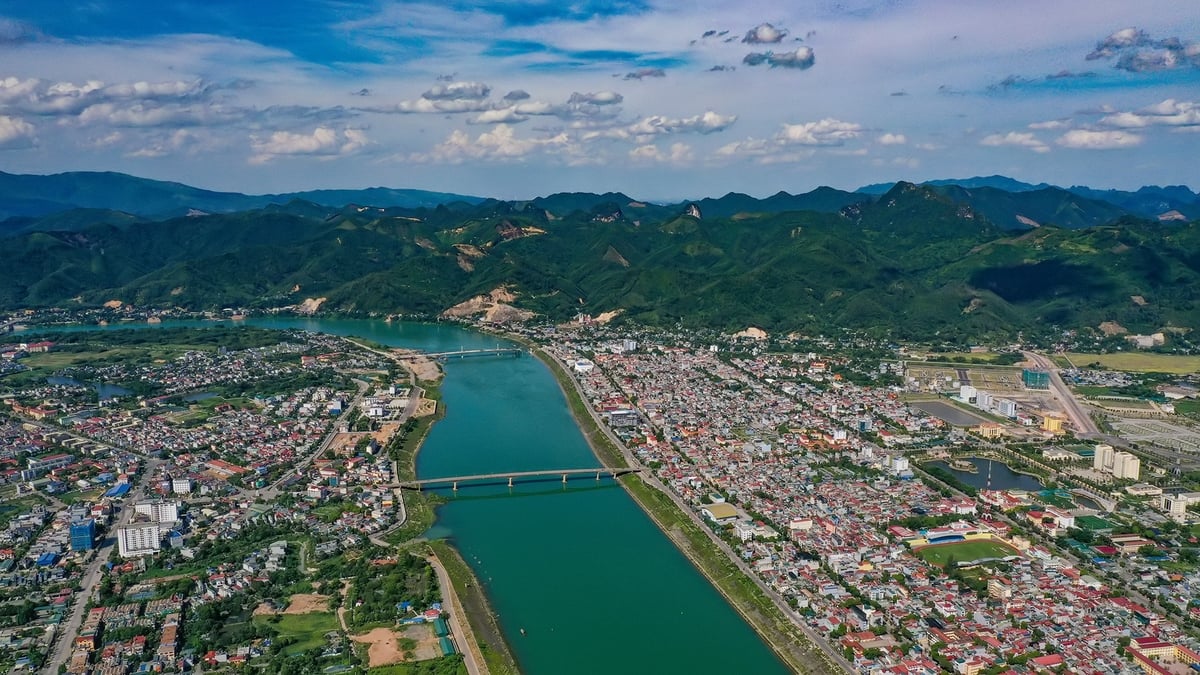
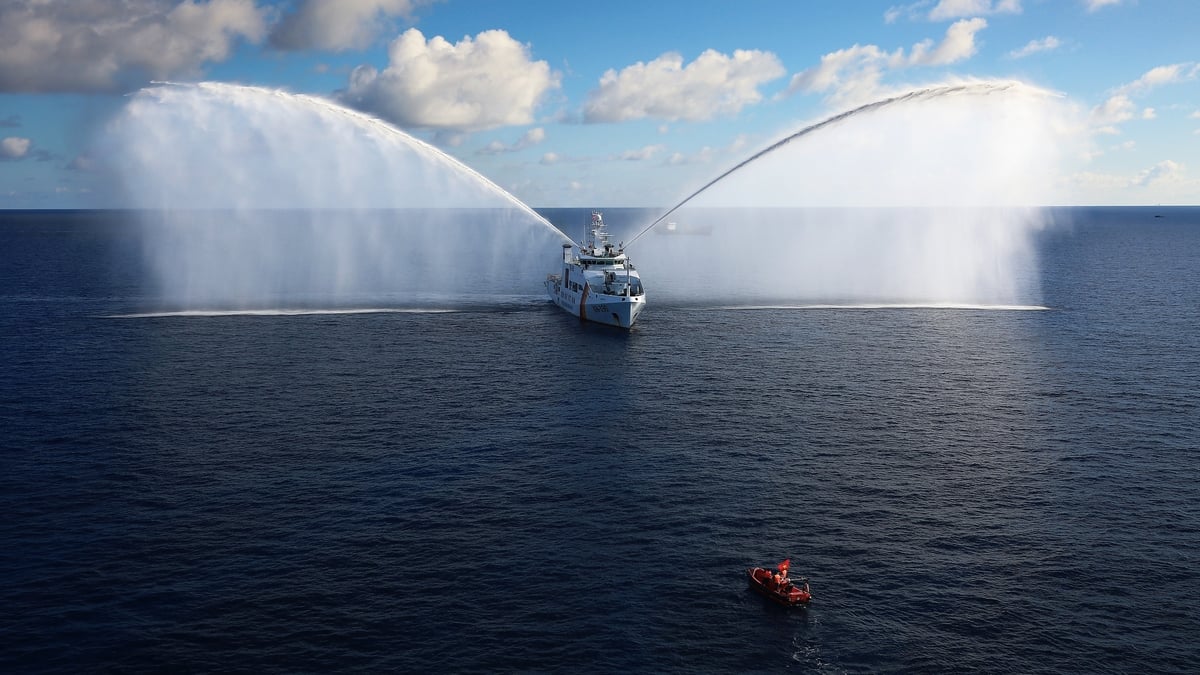











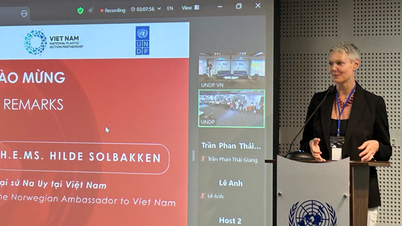










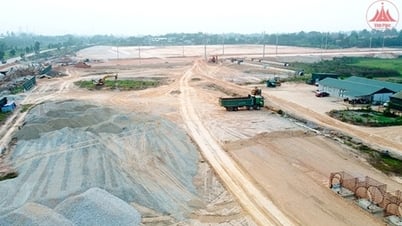
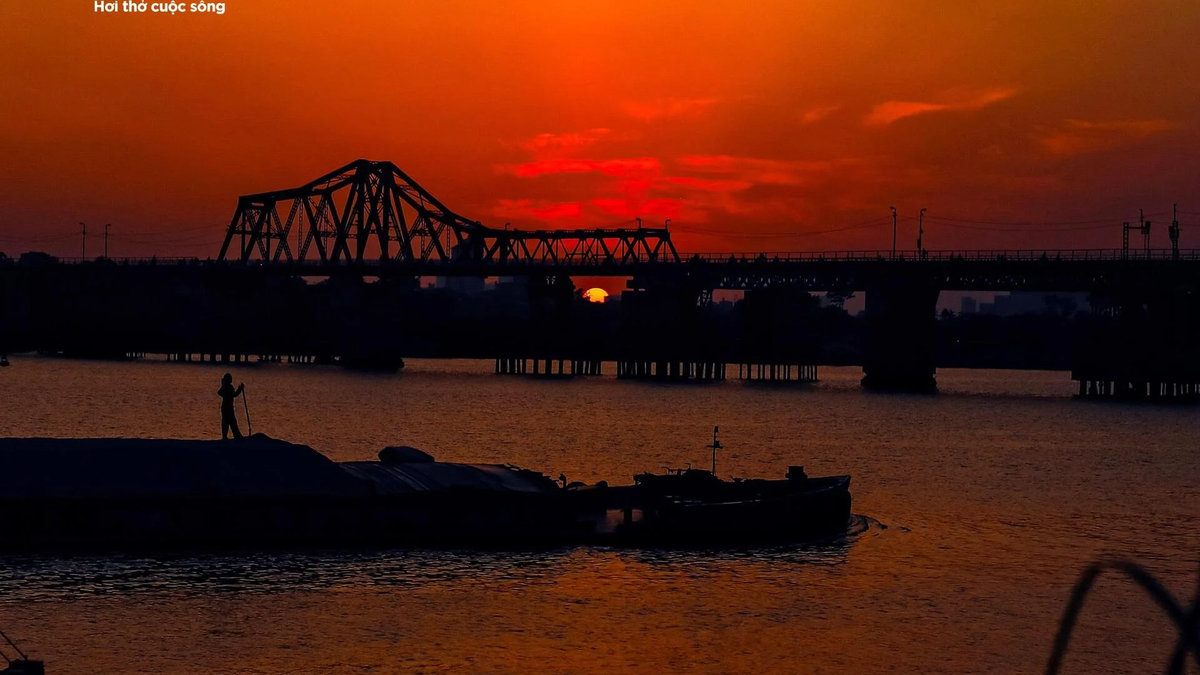
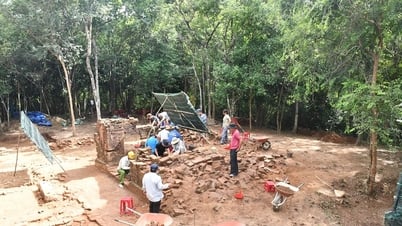































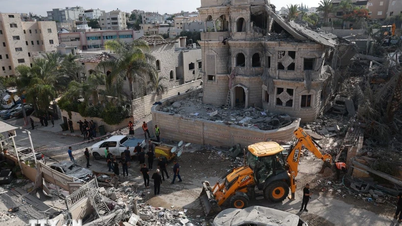



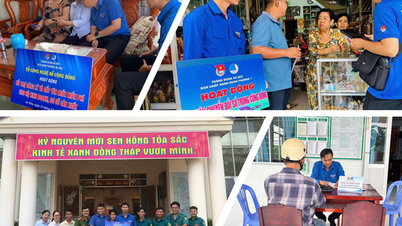


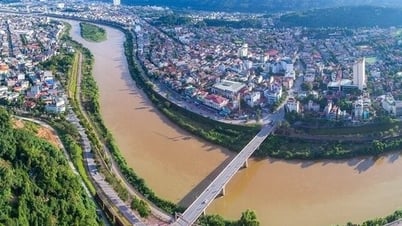


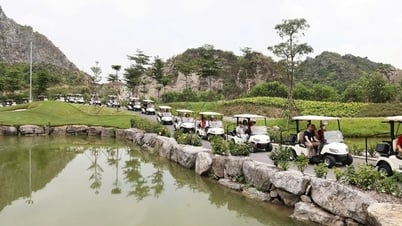







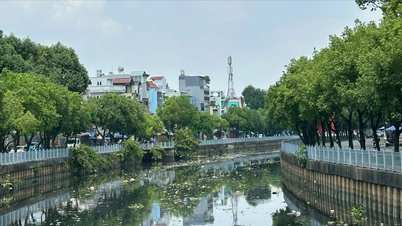



















Comment (0)